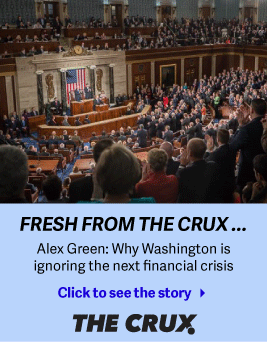| Home | About Us | Resources | Archive | Free Reports | Market Window |
Volatility Won't Cause a Crash in U.S. StocksBy
Monday, May 15, 2017
Fear in U.S. stocks just hit a 24-year low, according to the market's "fear gauge."
So... is it time to sell based on this indicator? Is this a sign of a top in U.S. stocks?
In short, surprisingly, NO.
Let me explain...
Last week, the CBOE Volatility Index ("VIX") fell to less than 10. It's at its lowest level since 1993.
In short – volatility is low... And that means investor fear is low.
Markets typically bottom when fear is high – the opposite of where it is today. But you can't use this gauge to call the top as well.
I learned this lesson from a smart hedge-fund manager...
Years ago, I worked for a billion-dollar hedge fund in New York. While there, I brought up this very idea... I suggested to him that the VIX was low – and it had been low for an incredibly long period of time.
I brought up the idea that volatility would certainly rise at some point... so if we made a bet on higher volatility, we could make a lot of money. It seemed like a simple story.
"And when will volatility return?" he asked.
His question shot right through my heart. He had asked exactly the right thing. And he was right... You can't know the day volatility will come back to the markets.
It turns out if we had bet on the VIX rising, we would have lost money. It stayed low for an impossibly long time.
Betting on higher volatility is a fool's game. You see, the VIX – like many other indicators – has a spotty track record.
Fear in U.S. stocks might have just hit multidecade lows according to the VIX... But that alone won't end this bull market.
The VIX is a measure of options-market volatility. When it's high, options – the stock market's equivalent of insurance – are expensive, which means investors are scared.
The opposite is true when the VIX is low... That means options are cheap, which shows optimism from investors.
The VIX recently fell below 10... its lowest level since 1993. Take a look...
 The VIX only goes back to 1990, so we have a somewhat limited history. But today's level is incredibly low. The question is... does it matter?
The news headlines have pegged this as a warning sign for stocks... They say investors are too bullish, and that means we're at a market top.
However, a quick look at the chart shows us that the VIX is a questionable tool for calling the start of a bear market...
Yes, the VIX hit a multiyear low in 2007, before a major bust. But the VIX was hitting major lows in 2004... and 2005... and 2006... and then again, finally, in 2007. Not until the 2007 low did it matter for stocks. If you had bet on volatility returning, you would have lost money for three years before you were "right."
What happened in the 1990s shows this point even more clearly...
Today, the VIX is hitting a low not seen since 1993. But that all-time low in the VIX was a fantastic time to buy stocks.
The VIX was fantastically low from 1993 to 1995, a period that kicked off a spectacular boom in the U.S. The S&P 500 increased by 20%-plus every year from 1995 to 1999.
If you'd listened to the fear gauge and sold stocks in 1993, you'd be kicking yourself.
The general wisdom is that a low VIX is a warning sign for stocks... But the indicator's own history proves that it's not reliable at predicting market peaks.
I believe we're in the middle of the "Melt Up"... and that stocks can go dramatically higher from here.
You can worry if you'd like for plenty of other reasons. But don't worry about the lack of worry, according to the VIX...
Good investing,
Steve
Further Reading:
"For the first time in years, greed is driving investors," Steve wrote last month. As he explained, the "Melt Up" is just getting started. Get the full story here: The 'Melt Up' Is Here – Investor Optimism Hits a 17-Year High.
During the final innings of the last stock market boom in the late 1990s, Steve got worried about valuations... and missed out on some of the biggest gains of our lifetime. He's not making that mistake again. Read more here: Dow 20,000 – Don't Chicken Out!
Market NotesNEW HIGHS OF NOTE LAST WEEK
Amazon (AMZN)... "FANG" stock
Netflix (NFLX)... "FANG" stock
Electronic Arts (EA)... "addictive" games
Yahoo (YHOO)... Internet pioneer
Apple (AAPL)... iPhone, iPad, Apple Watch
Corning (GLW)... Gorilla Glass
3D Systems (DDD)... 3D printing
Nvidia (NVDA)... computer chips
Broadcom (AVGO)... computer chips
PayPal (PYPL)... online payments
Shopify (SHOP)... e-commerce powerhouse
Priceline (PCLN)... travel-booking website
Marriott (MAR)... hotels
Hyatt Hotels (H)... hotels
United Continental (UAL)... airline
Boeing (BA)... planes
Raytheon (RTN)... "offense" contractor
General Dynamics (GD)... "offense" contractor
Brink's (BCO)... security and protection
Home Depot (HD)... one-stop shop for home repairs
Lowe's (LOW)... one-stop shop for home repairs
NVR (NVR)... houses
Aetna (AET)... health insurance
Humana (HUM)... health insurance
Quest Diagnostics (DGX)... medical tests
Whole Foods Market (WFM)... natural and organic foods
McDonald's (MCD)... Big Mac, fries, milkshakes
Domino's Pizza (DPZ)... pizza
Constellation Brands (STZ)... Robert Mondavi, Corona
Reynolds American (RAI)... Newport, Camel
NEW LOWS OF NOTE LAST WEEK
Nordic American Tankers (NAT)... tankers
Chicago Bridge & Iron (CBI)... energy infrastructure
Hertz Global (HTZ)... the death of rental cars
Tanger Factory Outlet Centers (SKT)... outlet malls
Simon Property (SPG)... malls, shopping centers, outlet malls
Signet Jewelers (SIG)... Kay Jewelers, Zales, Jared
Fossil (FOSL)... watches
Barnes & Noble (BKS)... bookstores
Viacom (VIA)... Nickelodeon, MTV, Comedy Central
Snap (SNAP)... social media fad stock
|
Recent Articles
|



